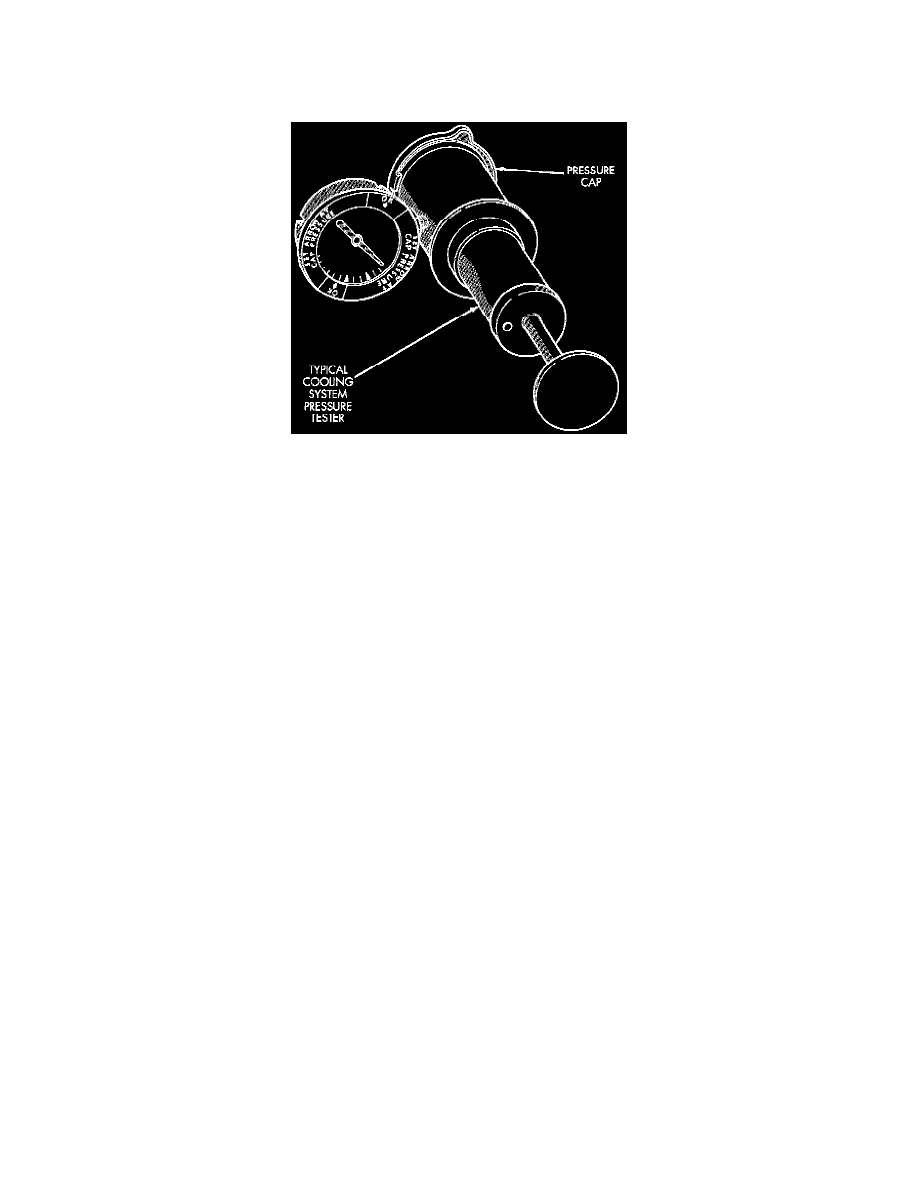Grand Cherokee 4WD V8-5.2L VIN Y (1998)

Radiator Cap: Component Tests and General Diagnostics
Radiator Cap - Pressure Testing
Remove cap from radiator. Be sure that sealing surfaces are clean. Moisten rubber gasket with water and install the cap on pressure tester (tool 7700 or
an equivalent).
Operate the tester pump and observe the gauge pointer at its highest point. The cap release pressure should be 97 to 124 kPa (14 to 18 psi). The cap is
satisfactory when the pressure holds steady. It is also good if it holds pressure within the 97 to 124 kPa (14 to 18 psi) range for 30 seconds or more. If
the pointer drops quickly, replace the cap.
CAUTION: Radiator pressure testing tools are very sensitive to small air leaks, which will not cause cooling system problems. A pressure cap that
does not have a history of coolant loss should not be replaced just because it leaks slowly when tested with this tool. Add water to tool. Turn tool upside
down and recheck pressure cap to confirm that cap needs replacement.
Radiator Cap to Filler Neck Seal - Pressure Relief Check
With radiator cap installed on filler neck, remove coolant reserve/overflow tank hose from nipple on filler neck. Connect a hand operated vacuum
pump to nipple. Operate pump until a reading of 47 to 61 kPa (14 to 18 inch Hg) appears on gauge. If the reading stays steady, or drops slightly and
then remains steady, the pressure valve seal is good. Replace radiator cap if reading does not hold.
WARNING: The warning words -do not open hot-on the radiator pressure cap are a safety precaution. when hot, pressure builds up in
cooling system. To prevent scalding or injury, the radiator cap should not be removed while the system is hot and/or under pressure.
There is no need to remove the radiator cap except for the following purposes:
-
To check and adjust antifreeze freeze point.
-
To refill system with new antifreeze.
-
For conducting service procedures.
-
When checking for vacuum leaks.
WARNING: If vehicle has been run recently, wait at least 15 minutes before removing radiator cap. with a rag, squeeze radiator upper
hose to check if system is under pressure. Place a rag over the cap and without pushing down, rotate cap counter-clockwise to the first
stop. Allow fluid to escape through overflow hose into coolant reserve/ overflow tank. Squeeze radiator upper hose to determine when
pressure has been released. When coolant and steam stop being pushed into tank and system pressure drops, remove radiator cap
completely.
